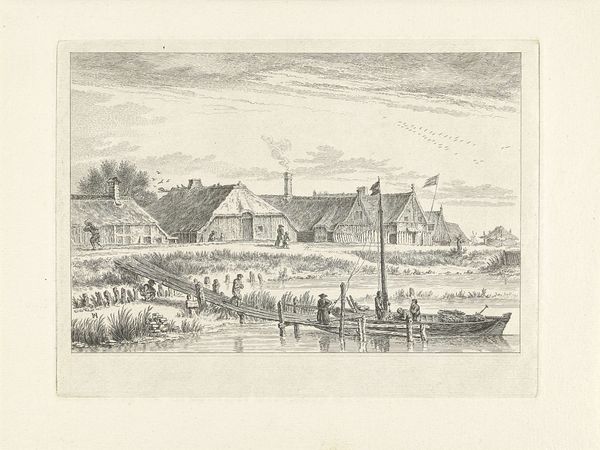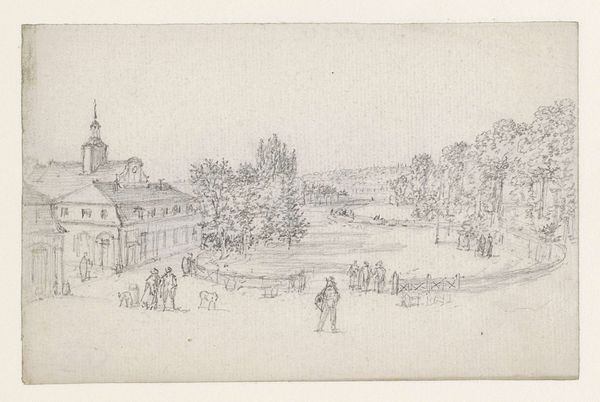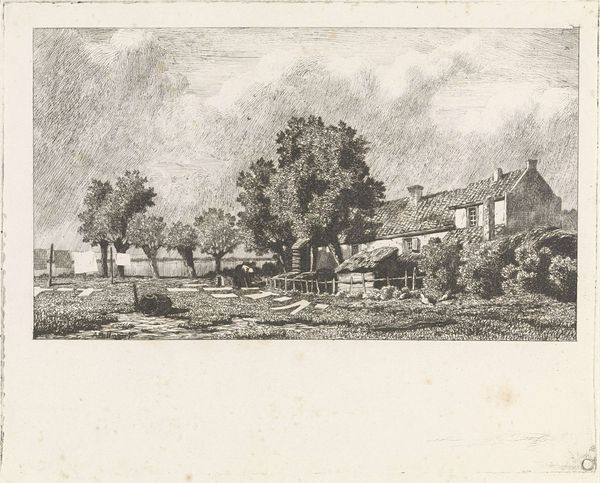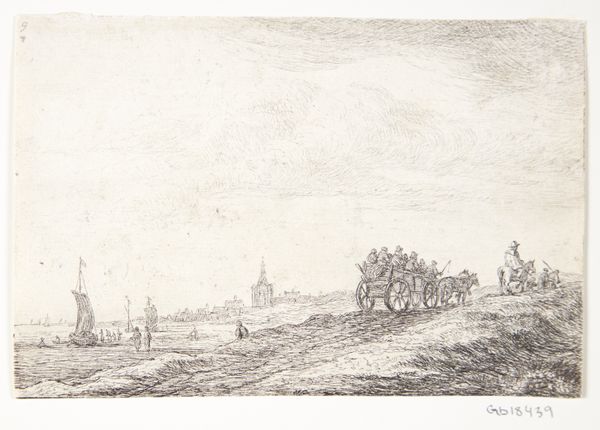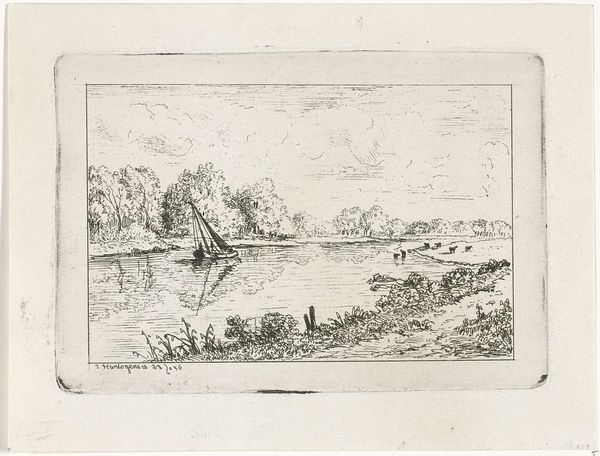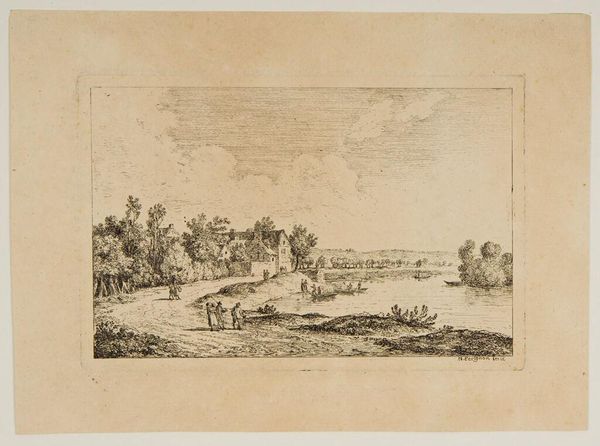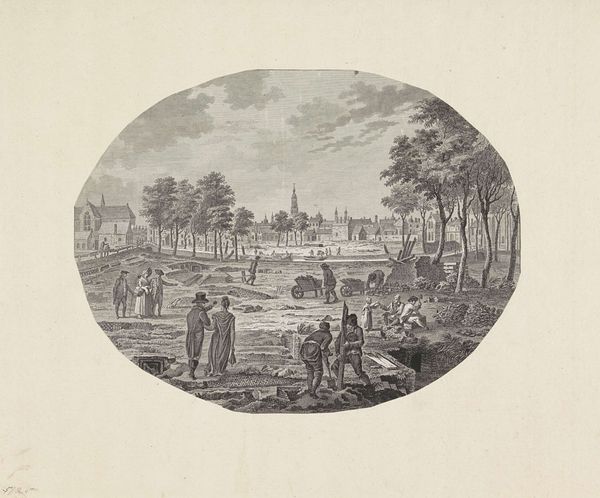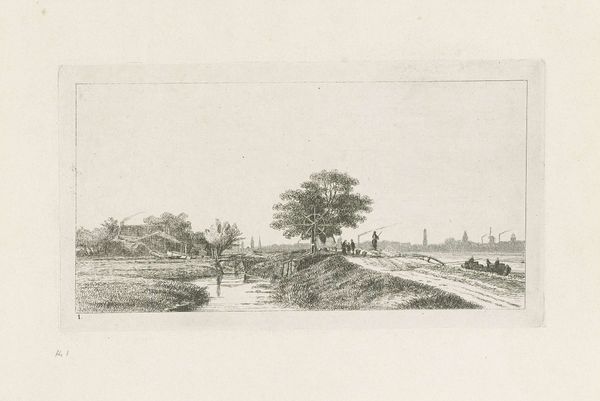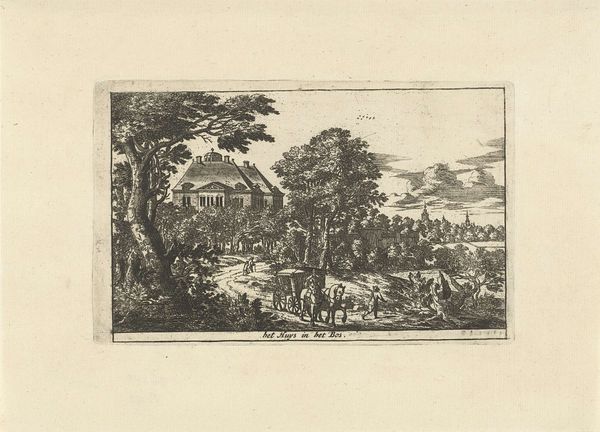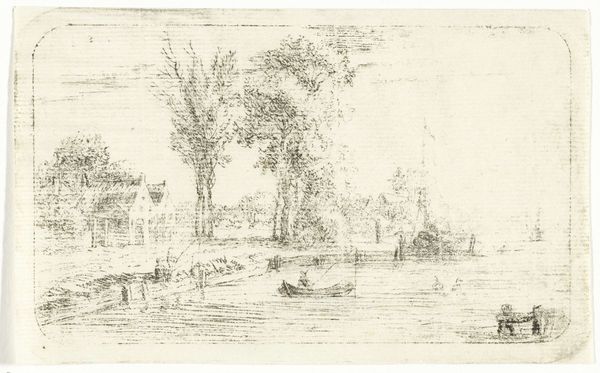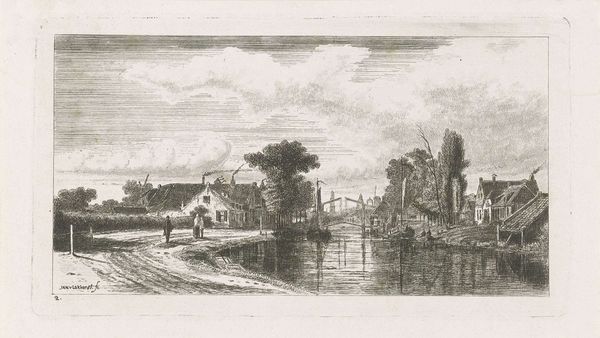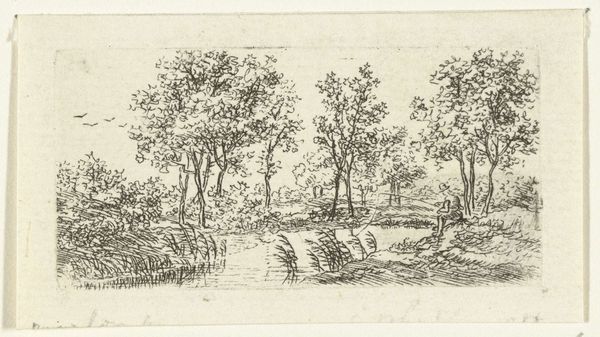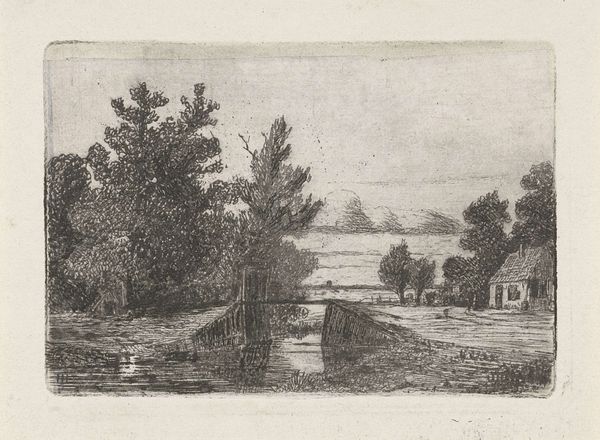
Dimensions: width 198 mm, height 302 mm
Copyright: Rijks Museum: Open Domain
Curator: Here we have "Feeding Swans in the Vondelpark", a print made by Johan Conrad Greive between 1847 and 1891. It gives us such a calm and reserved tone. Editor: Yes, the intricate lines in this engraving offer a fascinating study in textures—look at the reflections on the water, juxtaposed with the crispness of the architectural details in the background. The subtle gradations really convey a sense of depth and stillness. Curator: And the fact that this scene represents leisure, accessible to specific social groups at a particular time, raises interesting questions. Who had the privilege of leisurely park visits, and who did not? These landscapes often elide the social complexities of the time. Editor: Perhaps. But I am struck by the balance achieved between the various compositional elements. Note the foreground figures drawing our eye into the serene vista; how the darker tones frame the central open space. The building in the background presents a focal point and directs the eye without competing too intensely with the activity in the foreground. Curator: True, and consider this building and the implications of its position looming large, overseeing the supposedly free and unregulated nature. Its looming architecture hints at the embedded structures that define our social freedoms, no? Editor: That may be a modern projection. Looking at it purely aesthetically, the soft shading helps to evoke an idyllic Romanticism. It captures, in essence, a human longing for natural beauty that continues to speak to viewers even now, while displaying incredible draftsmanship. Curator: Indeed, Greive presents a visual rhetoric that perpetuates an appealing vision of a privileged society; however, such a beautiful and calm engraving risks neutralizing critical questions about the role of art itself in upholding socio-economic imbalances of power and the experience of marginalised figures that were systematically silenced from historical landscapes. Editor: While your viewpoint is equally important, it highlights a key paradox. What matters most - the inherent artistic values displayed or the latent politics that surround its making? Curator: They’re in constant interaction. One reveals the other. It seems inevitable. Editor: And this inevitable dialogue shapes and changes how we will look at it. Thank you! Curator: Indeed, thank you.
Comments
No comments
Be the first to comment and join the conversation on the ultimate creative platform.

